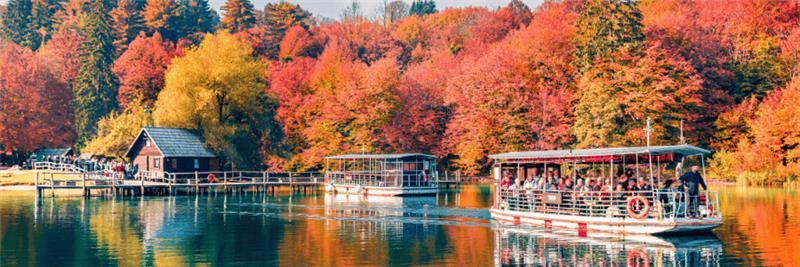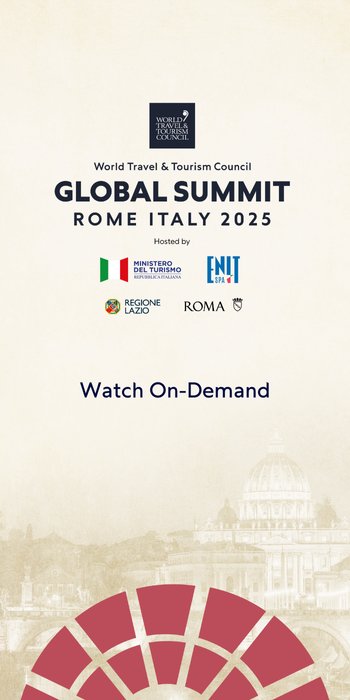Small actions, big impact: How SMEs can lead on sustainable tourism governance

As global Travel & Tourism returns to full throttle, destinations are grappling with renewed pressures from overcrowded streets and strained infrastructure. But this isn’t just a challenge for city authorities or national governments. Small and medium enterprises (SMEs), deeply rooted in local communities, have a critical role to play in shaping a tourism sector that benefits both visitors and residents. Sustainable governance doesn’t only belong to municipalities; SMEs can, and must, be part of the solution.
Sign in to access actionable insights
As global Travel & Tourism returns to full throttle, destinations are grappling with renewed pressures from overcrowded streets and strained infrastructure. But this isn’t just a challenge for city authorities or national governments. Small and medium enterprises (SMEs), deeply rooted in local communities, have a critical role to play in shaping a tourism sector that benefits both visitors and residents. Sustainable governance doesn’t only belong to municipalities; SMEs can, and must, be part of the solution.
What fits your destination?
Overcrowding is not a one-size-fits-all problem. Some places, like hypothetical City A in the recent WTTC report, suffer from high foot traffic in heritage areas with fragile infrastructure. Others, like City B, battle intense seasonality that overloads systems during peak months and leaves economic vacuums the rest of the year.
This context-specific challenge demands equally localised action. For SMEs, the first step is to think not about abstract sustainability frameworks, but what makes sense for the place they operate in. What pressures does your town face? When do they occur, and who do they affect most? One of the simplest and most powerful things SMEs can do is to focus their operations on direct local benefit. That starts with jobs. Hire locally, offer training opportunities, and collaborate with nearby schools or universities to support skill-building and workforce development.
In destinations where tourism is central to the economy, this kind of investment isn’t just good for business. It also creates socio-economic resilience. Supporting community charities or launching mentorship and scholarship programmes ties businesses directly to their social context, making residents partners in, not victims of, the visitor economy.
In cities like City A, one of the most effective strategies is spreading tourism beyond the main attraction zones. SMEs can actively promote off-the-beaten-path experiences such as guided walks, local artisans, rural excursions, that draw visitors away from the crowded centre. Curating or selling themed itineraries that integrate these lesser-known sites helps manage tourism flows and keeps more of the spend circulating locally. It helps unlock overlooked economic and cultural value.
Join the governance conversation
The WTTC’s six recommended steps for municipalities, from “Getting Organised” to “Empowering Residents”, aren’t just for governments. SMEs can adopt the same mindset, even without formal authority.
For example, where local tourism levies or taxes exist, SMEs can join or help form levy groups to collectively advocate for reinvestment of funds into infrastructure and sustainable initiatives. This is particularly relevant as although tourism generated $3.3 trillion in taxes globally in 2023, very little of it is reinvested into sustainable tourism solutions. In the US, less than 5%, with just 1% going to housing or sustainable transport. By aligning as a unified voice, SMEs can influence how those funds are spent, demanding accountability and transparency from policymakers.
In destinations facing strong seasonality, SMEs can contribute by shaping products and services that stretch demand across time. For instance, creating off-peak packages for domestic travellers, business retreats, or inclusive offerings for travellers with access needs, as suggested in the strategy for City B, can ease pressure during peak months and generate revenue during quieter periods.
Moreover, resident empowerment is a key pillar of sustainable governance, and SMEs can be at the forefront here too. Host forums, surveys or informal gatherings to understand local sentiment and expectations around tourism. Even simple actions like highlighting local suppliers, telling community stories through your brand, or featuring resident testimonials on your website can boost community pride and foster a shared sense of stewardship.
Think infrastructure
Many SMEs contribute to place-making, but the next step is to think infrastructurally. That could mean supporting projects that improve mobility, accessibility, or public spaces, especially in areas under strain. The problem of overcrowding often stems not from visitor volume alone, but from long-standing underinvestment in public infrastructure. SMEs, especially those grouped under local business alliances, can be catalysts for reinvestment by collaborating on grant applications or offering private co-funding for targeted improvements.
The temptation is to see tourism governance as the domain of regulators and councils. But SMEs, by sheer volume and visibility, are the tourism system in most destinations. Their daily decisions about who they employ, what they promote, how they price, and how they engage shape the visitor experience and the local response to it.
Tourism may be “blamed” for draining resources in media narratives, but the root causes are broader: chronic underinvestment, uneven urban planning, and patchy governance. SMEs that step up, not just to serve visitors, but to steward places, can lead a new chapter in sustainable tourism.


















